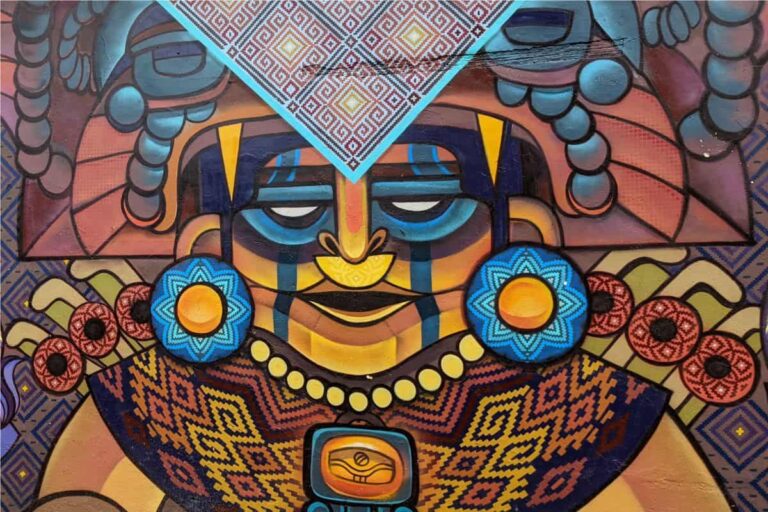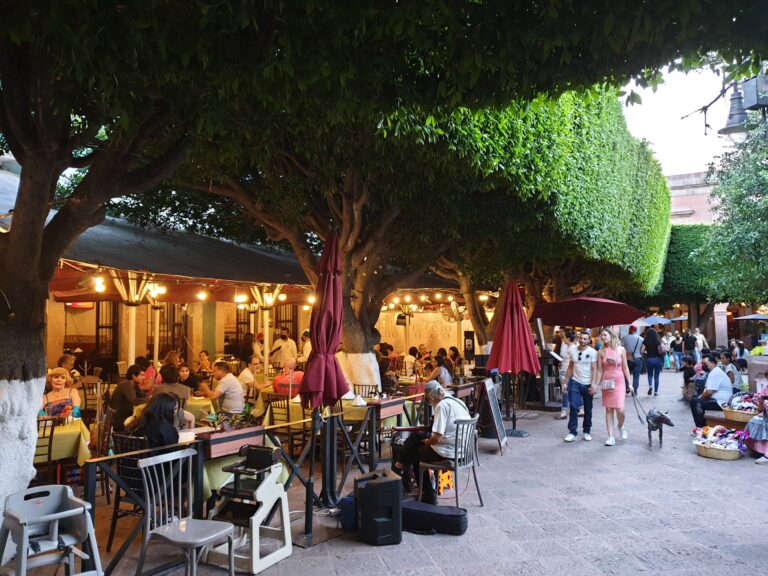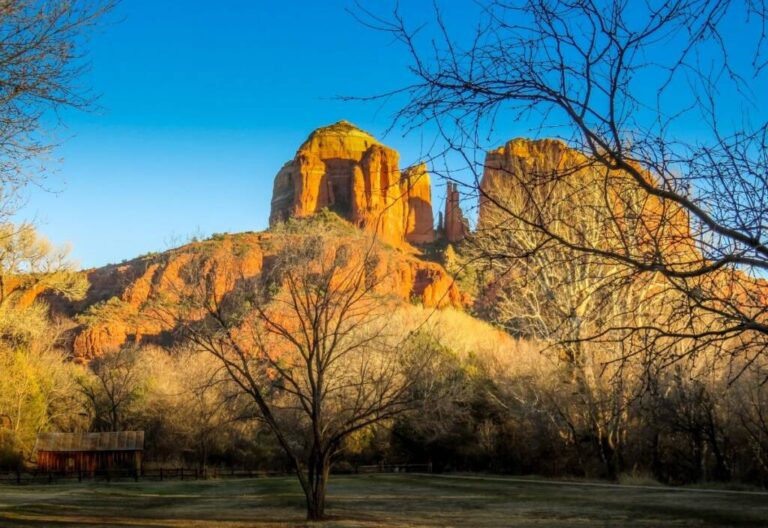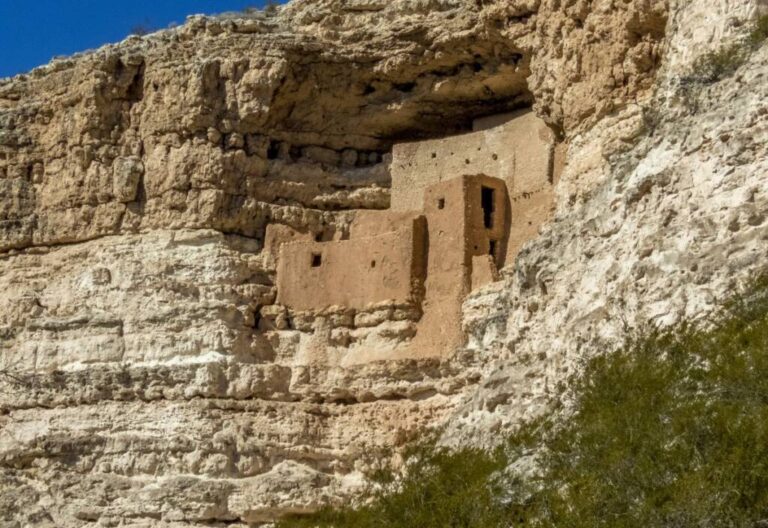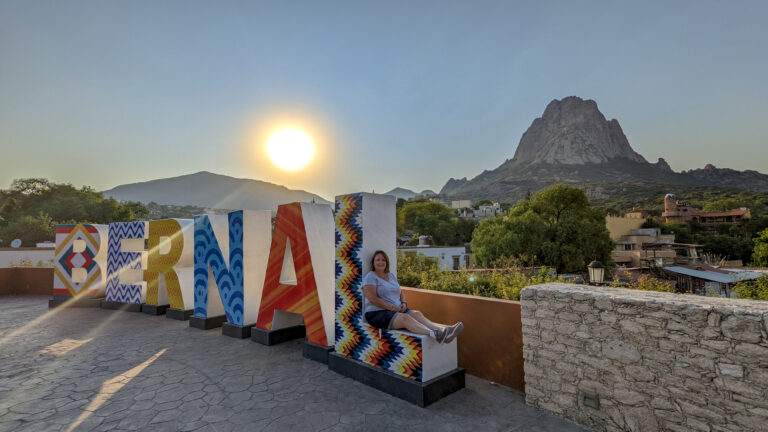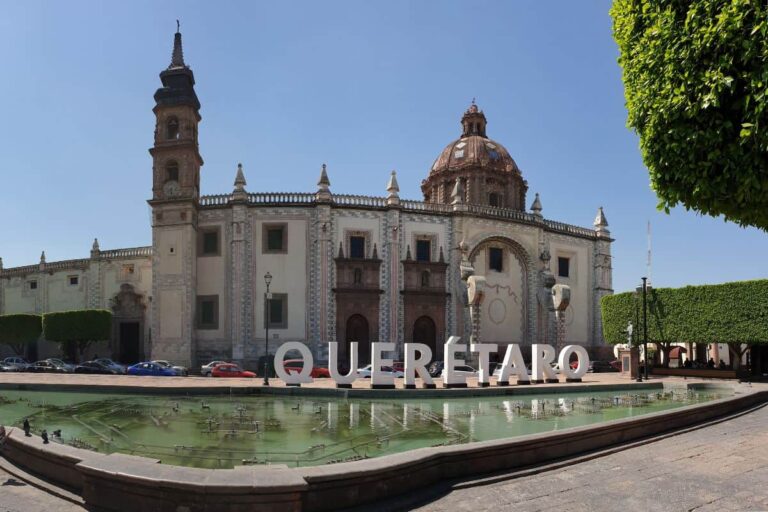6 Reasons to Visit Palenque, a Pueblo Magico

When you hear the name Palenque the chances are you immediately picture the incredible Mayan archeological site, but spend some time in the area and you will discover it is also the name of a charming town nestled in the northern jungles of Mexico’s Chiapas state.
Rich in heritage and surrounded by lush landscapes, Palenque offers a unique and unforgettable experience. Let’s explore 6 reasons to visit Palenque and find out why we believe it’s much more than just a ruin and should be a part of your Mexico road trip.
*This article contains affiliate links. If you purchase through them, we get a commission at no extra cost to you
Where is Palenque?
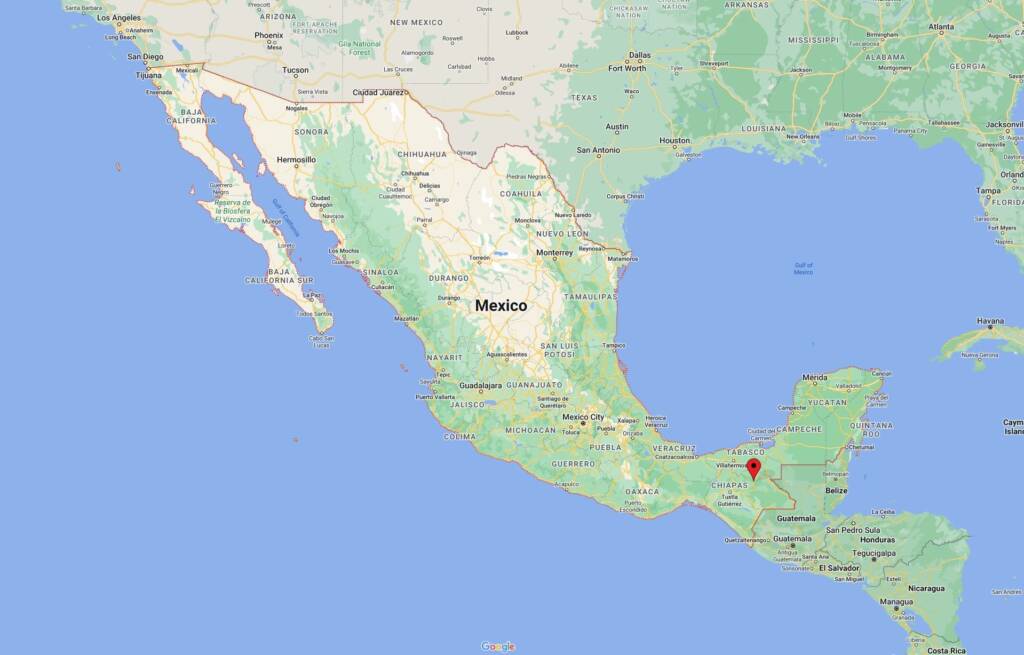
1. The ancient Mayan ruins of Palenque
Welcome to the awe-inspiring archaeological site of Palenque, one of those special places where history comes alive, and every step unveils the mysteries of the past!
This mesmerizing Mayan city, nestled amidst the lush jungles of Chiapas has captivated explorers and history enthusiasts for centuries with its majestic ruins and intriguing stories.
Originally known as Lakamha, Palenque was once a thriving Mayan city-state that flourished during the Late Classic period, from approximately 600 to 800 AD. Its strategic location allowed it to become a prominent centre of trade and a hub for cultural exchange between other Mayan cities.
Its remarkable architectural wonders, such as the iconic Temple of Inscriptions, have withstood the test of time, showcasing the ancient Mayans’ advanced engineering and astronomical knowledge. Within the Temple of Inscriptions lies the tomb of Pakal the Great, a revered ruler whose legacy adds an air of mystique to the site.
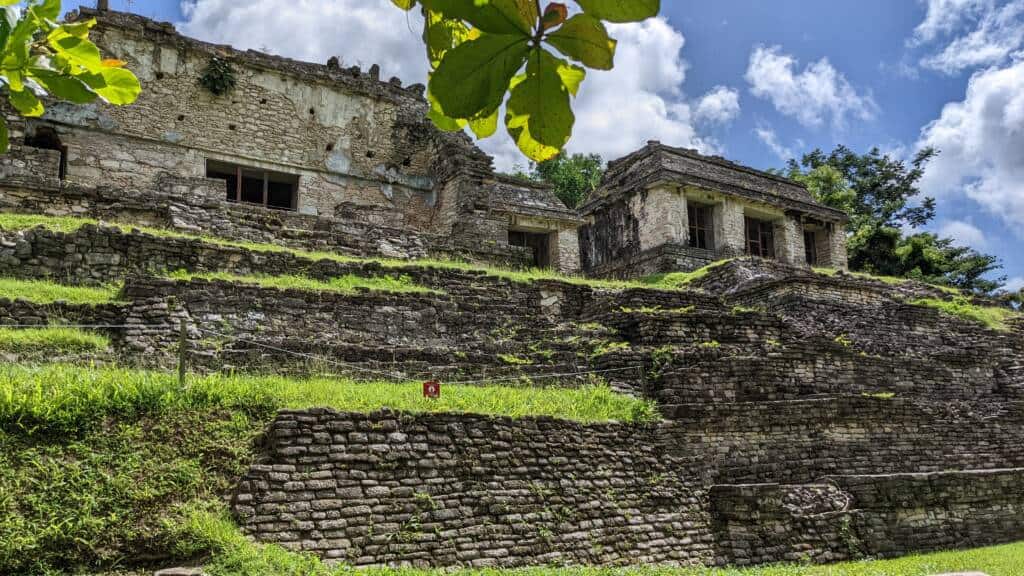
As you wander through the well-preserved courtyards and temples adorned with hieroglyphs, you’ll gain invaluable insights into the spiritual beliefs and daily lives of this extraordinary civilization. The artwork provides glimpses into their mythological stories and sacred rituals, making each visit to Palenque a journey of discovery.
Beyond the historical allure, Palenque’s setting in the embrace of the Chiapas jungle adds a touch of enchantment to the experience. The surrounding lush greenery teems with wildlife, including vibrant birds and the enchanting calls of howler monkeys, creating a harmonious blend of human creations and the wonders of nature.
Engaging with the warm-hearted local guides brings the history to life even further. Proud guardians of their cultural heritage, they share stories passed down through generations, offering a deeper understanding of the Mayan legacy.
A visit to the archaeological site of Palenque is a journey through time, connecting you with the ingenuity and spirituality of the Mayan civilization.
2. The 2000 year history of Palenque
Palenque holds a rich and fascinating history that dates back to ancient times. The region was originally inhabited by the Mayan civilization, and the city of Palenque emerged as one of the most important and influential cities in the Maya world.
The earliest known settlement in the area dates back to around 100 BC, and it was during the Classic period (approximately 300 to 900 AD) that Palenque flourished as a powerful city-state.
During this time, Palenque saw significant construction and expansion of its monumental architecture, including the iconic Temples of the Cross, the Inscriptions, and the stunning Temple of the Inscriptions, which houses the tomb of the revered ruler K’inich Janaab’ Pakal.
Palenque reached its peak between the 6th and 8th centuries AD when it became a centre of culture, religion, and politics in the Maya world. The city’s rulers engaged in both alliances and conflicts with neighbouring city-states, and Palenque played a pivotal role in the intricately woven web of Maya politics.
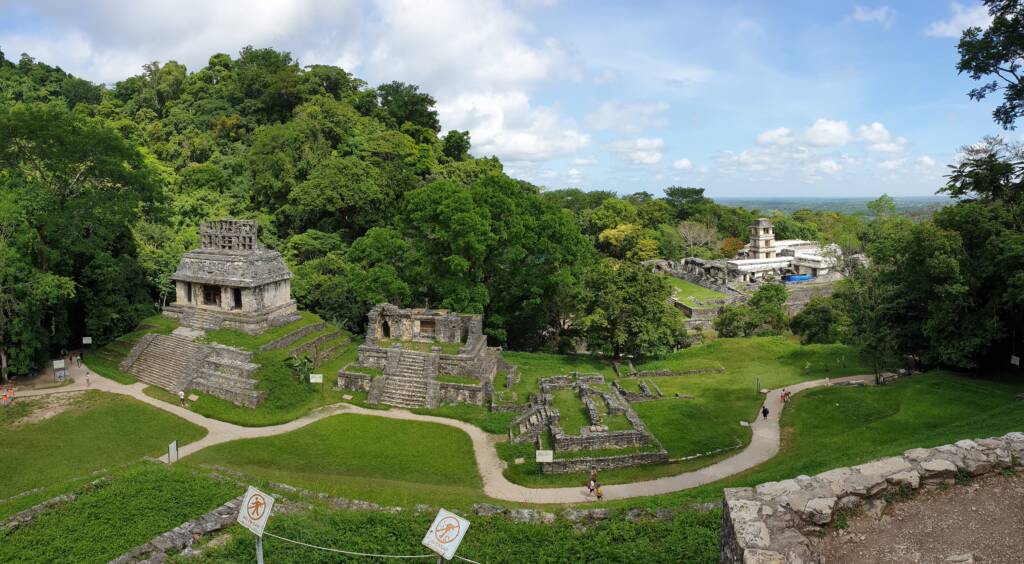
In the 10th century, Palenque, like many other Maya cities, experienced a decline, and the once-thriving metropolis was eventually abandoned. The reasons for the city’s decline remain a subject of scholarly debate, but it is believed that a combination of factors, including environmental challenges, warfare, and political instability, contributed to its downfall.
The ruins of Palenque remained hidden in the dense jungles until the 18th century when Spanish explorers stumbled upon its magnificent temples and pyramids. Archaeological investigations began in the 20th century, revealing the wealth of art, hieroglyphic inscriptions, and historical records that provide valuable insights into Maya civilization.
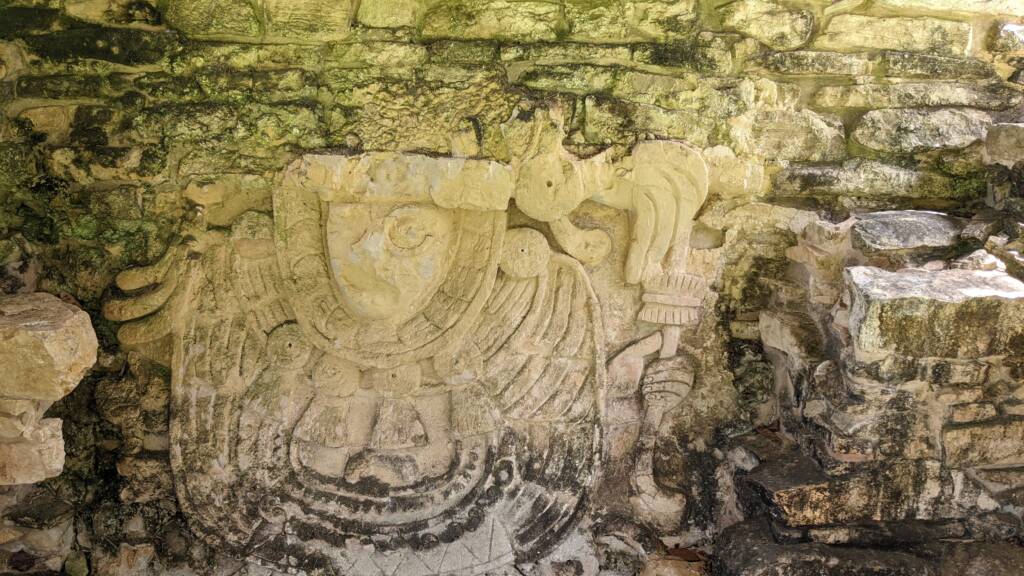
Today, Palenque stands as a UNESCO World Heritage Site and a testament to the ingenuity and sophistication of the ancient Maya civilization. Visitors from around the world come to admire its breathtaking architectural marvels and immerse themselves in the mysteries of this ancient city.
3. Palenque, the jungle oasis
The jungle surrounding Palenque is a verdant paradise, teeming with biodiversity and natural wonders that offer boundless opportunities for nature lovers to immerse themselves in the beauty of the natural world.
As you venture into this lush wilderness, you’ll be captivated by the symphony of sounds – the chirping of birds, the rustling of leaves, and the distant calls of howler monkeys – all composing a mesmerizing jungle orchestra.
For birdwatchers, the jungle presents a treasure trove of avian delights. Colourful toucans, vibrant parrots, and elegant quetzals are just a few of the winged wonders that call this canopy home. Their brilliant plumage adds splashes of colour to the emerald green foliage, creating a breathtaking sight that will leave bird enthusiasts in awe.
Nature lovers seeking adventure will find unending opportunities for exploration. Guided jungle hikes take you on an immersive journey through ancient trails, where each step brings new discoveries.
Moreover, the jungle is a sanctuary for wildlife enthusiasts, as it shelters a diverse array of animals. From jaguars and ocelots to playful spider monkeys and curious coatis, the jungle’s inhabitants never cease to amaze.
And not to forget the roars of howler monkeys from the treetops, as you will hear in the video.
Observing these creatures in their natural habitat is an unforgettable experience, reminding us of the importance of conservation and preserving these precious ecosystems.
As night falls, the jungle comes alive with nocturnal creatures, offering a whole new world to explore after dark. Guided night tours provide an opportunity to encounter the secretive creatures that emerge under the moon’s gentle glow, adding an element of mystery to your nature-filled escapade.
4. The hidden waterfalls near Palenque
Prepare to be enchanted by the natural wonders surrounding Palenque, as the region is adorned with mesmerizing waterfalls that seem like scenes straight out of a fairy tale. These breathtaking cascades are nature’s masterpieces, inviting travelers to immerse themselves in their refreshing waters and savour moments of tranquility amidst the lush landscapes.
Among the most famous waterfalls near Palenque is the enchanting Agua Azul. Aptly named for its azure-coloured waters, this stunning cascade flows through a series of tiered limestone formations, creating a magical sight that is both soothing and awe-inspiring. As you dip your toes into the cool waters or bask in the sun-soaked rocks, you’ll feel a profound sense of serenity, lost in the beauty of nature.
* It’s worth noting that while Agua Azul is stunning if you visit at the right time, it can be a very different story if there has been recent rain as it washes a lot of sediment down the falls and the water can very quickly look more like something inside Willy Wonka’s factory!
Misol-Ha is another jewel in the vicinity, captivating visitors with its sheer drop of approximately 35 meters (115 feet). The pool at the base of the falls beckons you to take a refreshing swim, providing a moment of blissful escape from the world’s hustle and bustle, and the heat.
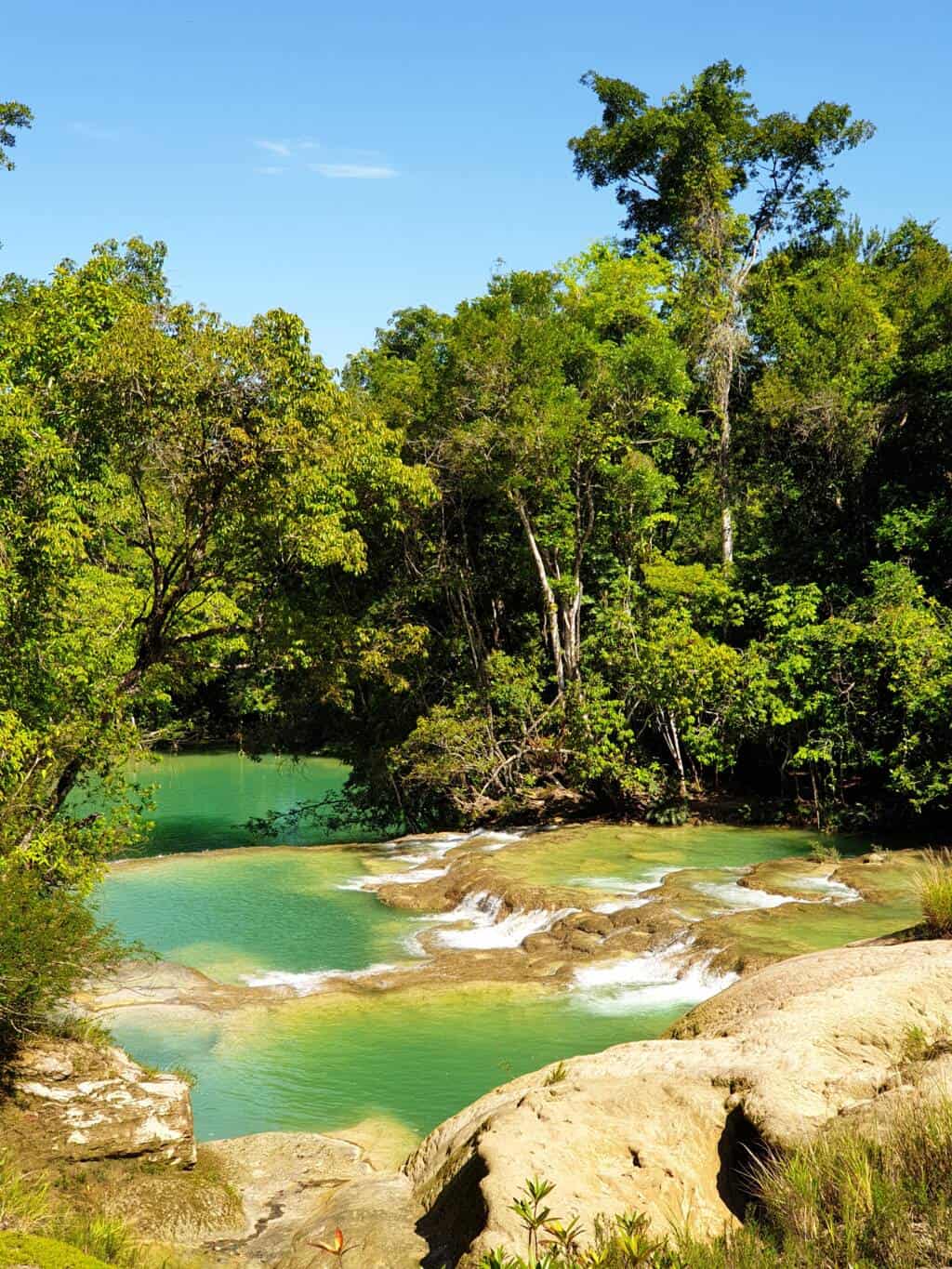
But that’s not all; just a short distance from Palenque lies another hidden gem, Cascadas Roberto Barrios. Nestled amidst dense jungle, this lesser-known waterfall paradise offers an off-the-beaten-path adventure.
The falls feature turquoise waters that cascade over vibrant moss-covered rocks, creating a mesmerizing spectacle that will leave you in awe of nature’s artistry.
* Although very similar to Agua Azul, these falls seem to be more protected and the water tends to be less affected by storms. This means you have a much better chance of experiencing the pristine clarity of the water at any time of year.
Beyond their scenic splendour, these waterfalls hold significance in the local mythology and culture. The Mayan people believed these cascades were sacred places, home to benevolent spirits. As you explore the area, you’ll find that the locals still hold a deep reverence for these natural wonders, preserving their spiritual connection with the land.
Whether you’re seeking adventure, relaxation, or simply an escape into nature’s embrace, the waterfalls near Palenque, including Agua Azul, Misol-Ha, and Cascadas Roberto Barrios, offer an unforgettable experience. The symphony of cascading waters, the lush greenery, and the sense of wonder they evoke will leave you with cherished memories of a true paradise found.
5. Palenque’s sustainable ecotourism efforts
Palenque is not only a treasure trove of historical and natural wonders but also a shining example of sustainable ecotourism efforts. Recognizing the importance of preserving its cultural heritage and protecting the delicate ecosystem, the town has implemented various initiatives to ensure that tourism harmoniously coexists with the environment and benefits the local community.
One of the key sustainable tourism efforts in Palenque is the promotion of eco-friendly practices and responsible tourism. Local tour operators and businesses prioritize environmental conservation, encouraging visitors to minimize their impact on the surroundings.
From providing eco-friendly accommodations to organizing eco-conscious tours, these efforts seek to raise awareness about the importance of preserving the region’s natural beauty.
To protect the ancient archaeological site and its fragile structures, strict conservation measures are in place. Visitors are educated on the significance of responsible behaviour, such as not touching the ruins or leaving behind any litter.
These conservation efforts aim to safeguard the historical treasures for future generations while allowing tourists to experience the magic of Palenque’s ancient past.
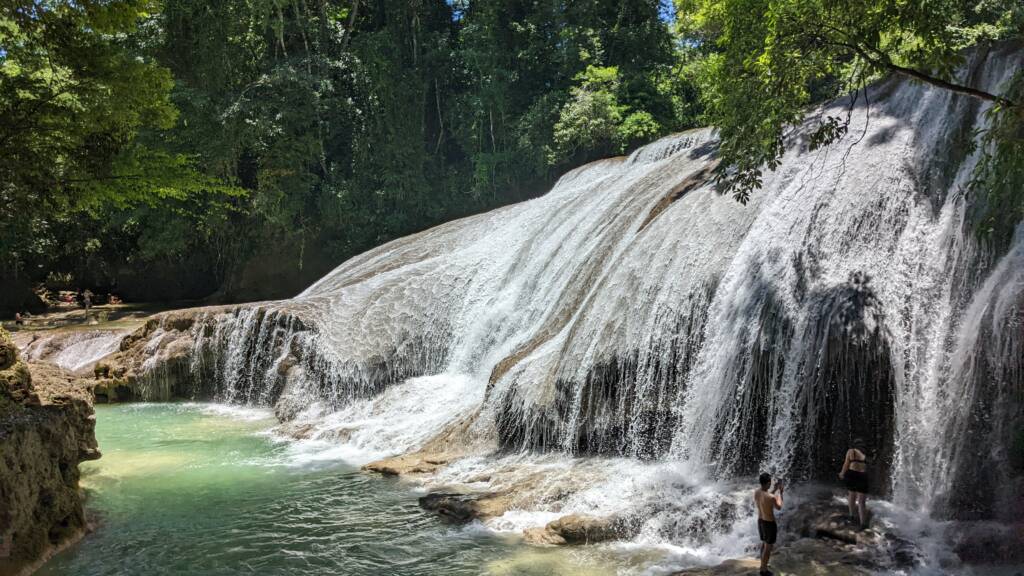
Sustainable tourism also plays a crucial role in supporting the local community. Palenque’s residents actively engage in community-based tourism initiatives, offering authentic experiences that showcase their traditions, artistry, and culinary delights.
By embracing community-based tourism, visitors can directly contribute to the local economy, ensuring that the benefits of tourism are shared among the people who call Palenque home.
This fosters a deeper appreciation for the town’s rich history and traditions while encouraging cross-cultural understanding and respect. By embracing eco-friendly practices, conserving its historical and natural treasures, and promoting community-based initiatives, Palenque showcases the power of responsible tourism in preserving its authenticity and ensuring a sustainable future.
So, when you visit Palenque, not only will you be enchanted by its beauty, but you’ll also be contributing to the preservation of this unique and precious destination for generations to come
6. Palenque is also for foodies
Palenque is not only a destination for history and nature enthusiasts but also offers plenty for food lovers.
From traditional Mayan dishes to regional Mexican delights, Palenque offers visitors an exciting range of dishes that showcases the region’s culinary heritage.
One must-try culinary experience in Palenque is indulging in the flavours of traditional Mayan cuisine. Local eateries and food stalls serve up dishes that pay homage to ancient culinary traditions.
From cochinita pibil, a succulent slow-roasted pork marinated in achiote and citrus juices, to tamales wrapped in banana leaves and filled with savoury fillings, each bite is a celebration of the local flavours and techniques passed down through generations.

Palenque also presents an array of regional Mexican dishes that delight the palate. You must experience the tantalizing taste of Chiapas-style tamales, distinguished by their unique masa (corn dough) infused with ingredients like chocolate, cinnamon, or herbs.
For a hearty meal, try the sopa de chipilín, a traditional soup made with indigenous chipilín leaves, complemented by rich broth and tender meat.
To accompany your meal, don’t miss the opportunity to try traditional beverages such as pozol, a refreshing corn-based drink with a hint of cocoa, or agua de chaya, a healthy green drink made from the leaves of the chaya plant. These local beverages provide a unique and authentic taste of Palenque’s culinary heritage.
Common questions about Palenque
How do I get to Palenque?
Getting to Palenque is an exciting part of the journey, as it allows you to experience the beauty of the region while heading towards this historical treasure. There are several ways to reach Palenque, each offering its own unique experience and convenience.
By Air: Palenque can be accessed through two nearby airports, offering convenient options for air travel.
Villahermosa Airport: The Villahermosa International Airport (VSA) is the closest major airport to Palenque, located approximately 140 kilometres (87 miles) away. Several domestic airlines operate regular flights from major cities in Mexico, including Mexico City, Cancun, and Monterrey, to Villahermosa.
From the airport, you can easily find taxi services or private transfers to take you to Palenque. The journey takes around two to three hours, allowing you to enjoy the scenic drive through the lush landscapes of Chiapas.
Tuxtla Gutierrez Airport: Another option is to fly to the Tuxtla Gutierrez International Airport (TGZ), situated approximately 290 kilometres (180 miles) from Palenque. This airport serves as a gateway to the beautiful state of Chiapas. Several airlines offer domestic flights from cities such as Mexico City, Guadalajara, and Monterrey to Tuxtla Gutierrez.
From the airport, you can arrange ground transportation, including shared shuttles or private transfers, to reach Palenque. The journey takes approximately four to five hours, allowing you to admire the scenic beauty of the Chiapas region along the way.
By Bus: Palenque is well-connected by an extensive network of buses. Several bus companies provide comfortable and affordable options for travelers. From various cities in Mexico, including Mexico City, Cancun, Merida, and San Cristobal de las Casas, you can find direct bus routes to Palenque. The journey may take several hours, but it allows you to soak in the picturesque landscapes along the way.
By Car: If you prefer the freedom and flexibility of driving, you can rent a car and embark on a road trip to Palenque. The town is accessible via well-maintained highways, and the scenic drive offers opportunities to explore the surrounding natural beauty at your own pace. It’s important to note that parking facilities are available near the archaeological site for visitors arriving by car.
By Tour: Another option is to join a guided tour that includes transportation to Palenque. Many tour operators offer comprehensive packages that not only take you to the archaeological site but also provide additional stops and insights into the region’s culture and history. This can be an excellent choice for those seeking a hassle-free and informative experience.
Regardless of the mode of transportation you choose, reaching Palenque promises to be a scenic journey. You’ll have the opportunity to immerse yourself in the stunning landscapes of Mexico and anticipate the awe-inspiring wonders that await you in this ancient Mayan city.
What is the best time to visit Palenque?
The best time to visit Palenque largely depends on your personal preferences and what you aim to experience during your trip. Palenque enjoys a tropical climate with distinct wet and dry seasons, each offering unique advantages for travelers.
The dry season, which runs from November to April, is generally considered the best time to visit Palenque. During this period, the weather is typically warm and sunny, with minimal rainfall. The dry season is ideal for exploring the archaeological site and enjoying outdoor activities in the surrounding jungle.
The months of December and January can be particularly busy due to the holiday season, so it’s advisable to plan ahead and book accommodations in advance.
The wet season, from May to October, brings more frequent rainfall and higher humidity to Palenque. While the rainforest becomes lush and vibrant during this time, it’s important to be prepared for occasional showers and humidity.
Despite the rain, the wet season has its own allure, as the jungle comes alive with vibrant flora and fauna. The waterfalls in the area are also at their fullest, creating breathtaking natural spectacles. If you don’t mind the rain and wish to witness the region’s lush beauty, the wet season can offer a unique and enchanting experience.
It’s worth noting that Palenque can be visited throughout the year, and each season has its own charm. It’s advisable to check the weather forecast and plan accordingly, especially if you have specific activities or attractions in mind.
Where should I stay in Palenque?
Palenque offers a range of accommodation options to suit different preferences and budgets. Here are a few popular areas to consider for your stay in Palenque:
Palenque Archaeological Site Area: If you want to be in close proximity to the ancient ruins, there are several hotels and lodges located near the Palenque Archaeological Site. Staying in this area allows you to conveniently explore the ruins early in the morning or late in the afternoon when the site is less crowded. Additionally, some accommodations in this area offer beautiful jungle views, creating a tranquil atmosphere.
Downtown Palenque: The town of Palenque itself has a bustling downtown area with a variety of hotels, guesthouses, and hostels. Staying in downtown Palenque provides easy access to local restaurants, shops, and markets. You can immerse yourself in the vibrant atmosphere of the town, interact with locals, and enjoy the lively cultural scene.
La Canada: La Canada is a residential neighbourhood located a short distance from the town centre. It offers a quieter and more residential environment compared to downtown Palenque. This area has a selection of charming boutique hotels and eco-lodges nestled in the jungle surroundings. Staying in La Canada allows you to experience a tranquil retreat while still being within reach of the town’s amenities.
El Panchán: El Panchán is a popular and bohemian area located near the Palenque Archaeological Site. This eco-friendly community offers a range of accommodations, from rustic cabanas to boutique hotels. It has a laid-back atmosphere, surrounded by lush vegetation and a few restaurants and bars where you can enjoy live music and mingle with fellow travelers.
When choosing your accommodation, consider factors such as proximity to attractions, preferred amenities, and the type of experience you wish to have in Palenque. Regardless of where you decide to stay, Palenque’s charm and natural beauty will ensure a memorable visit to this captivating destination.
What should I eat in Palenque?
Palenque offers a delightful culinary experience, where you can enjoy a variety of dishes that showcase the region’s flavours and culinary heritage. Here are some must-try foods when visiting Palenque:
Cochinita Pibil: This iconic Mayan dish is a true delight for the taste buds. Succulent pork is marinated in achiote paste and citrus juices, then slow-roasted until tender. The result is a flavorful and tender meat that is often served in tacos or tortas (sandwiches) accompanied by pickled onions and habanero salsa.
Tamales: Tamales are a staple in Mexican cuisine, and Palenque is no exception. These delicious parcels are made from masa (corn dough) filled with various ingredients such as chicken, pork, or vegetables, then wrapped in a corn husk and steamed to perfection. They are often enjoyed for breakfast or as a snack.
Empanadas Chiapanecas: These savoury turnovers are a specialty of the region. The crispy pastry is filled with a combination of meats, cheese, vegetables, or beans, creating a mouthwatering treat. They are perfect for a quick and tasty snack while exploring Palenque.
Sopa de Chipilín: This traditional soup features the indigenous herb chipilín, which adds a unique flavour to the broth. It is often prepared with a chicken or pork base, along with other ingredients like corn, beans, and herbs. Served with tortillas, this hearty soup is a comforting and flavorful choice.
Marquesitas: Indulge your sweet tooth with marquesitas, a beloved street food treat. These crispy, rolled wafers are filled with a combination of ingredients such as Nutella, cheese, condensed milk, or fruit preserves. They make for a delightful dessert or a sweet snack to enjoy while exploring Palenque.
Don’t forget to complement your meals with traditional beverages such as pozol, a refreshing corn-based drink often flavoured with cocoa or cinnamon, or agua de chaya, a healthy green drink made from the leaves of the chaya plant, or one of the many flavours of agua fresca.
Is it necessary to know Spanish to visit Palenque?
While knowing Spanish can enhance your travel experience in Palenque and other parts of Mexico, it is not absolutely necessary to visit Palenque. Many visitors who do not speak Spanish enjoy their time in the region without any significant language barriers.
In Palenque and other tourist destinations, you will find that many locals involved in the tourism industry, such as hotel staff, tour guides, and restaurant employees, have basic to moderate English language skills. Signs and informational materials at popular tourist sites are often available in both Spanish and English as well.
However, outside of the main tourist areas, English proficiency may be limited, especially in smaller towns and rural areas. In such cases, basic Spanish phrases and gestures can be helpful for everyday interactions, such as ordering food, asking for directions, or shopping.
If you are not familiar with Spanish, consider carrying a phrasebook or using language translation apps on your phone to aid communication. Locals usually appreciate efforts to communicate in their language, even if it’s just a few words or phrases.
Overall, while knowing some Spanish can certainly enhance your travel experience and interactions with locals, it is not a prerequisite for visiting Palenque. With a mix of English-speaking services and a willingness to embrace the local culture, you can fully enjoy the wonders of Palenque.
Is Palenque safe for tourists?
As with any travel destination, safety is an important consideration for tourists visiting Palenque. Overall, Palenque is considered a safe destination for tourists, and thousands of visitors explore the archaeological site and surrounding areas each year without encountering major issues.
However, like in any place, it’s essential to exercise basic precautions to ensure a safe and enjoyable experience. Here are some tips to enhance your safety while visiting Palenque:
Stick to Well-Traveled Areas: When exploring the archaeological site and downtown Palenque, stick to well-traveled paths and tourist areas, especially during the daytime.
Use Reputable Tour Operators: If you plan on taking tours or excursions, opt for reputable and licensed tour operators. This will help ensure your safety during any organized activities.
Secure Your Belongings: Keep your valuables, such as passports, money, and electronics, in a secure place, like a hotel safe. Avoid displaying expensive items in public.
Be Cautious with Transportation: Use licensed taxis or trusted transportation services. Avoid accepting rides from unmarked vehicles or strangers.
Stay Informed: Stay informed about local news and events, and check for any travel advisories issued by your home country’s government.
Respect Local Customs: Respect the local culture and customs, and be mindful of local laws and regulations.
Communicate with Others: If you are traveling alone, let someone know your plans and whereabouts. Keep important contact information handy.
While Palenque is generally safe for tourists, it’s always wise to be aware of your surroundings and exercise common sense during your visit.
Can I visit Palenque on a day trip?
Yes, it is possible to visit Palenque on a day trip, depending on your location and travel preferences. Palenque is a popular tourist destination, and there are various options available for day trips from nearby cities or towns.
If you are staying in cities like Villahermosa or San Cristobal de las Casas, you can find organized day tours that include transportation to Palenque, a guided visit to the archaeological site, and often stops at other nearby attractions.
Keep in mind that the journey to Palenque from some locations may take a few hours, especially if you are traveling from cities further away. However, with an early start, you can make the most of your day and have ample time to explore the ancient ruins and immerse yourself in the history and natural beauty of Palenque.
If you prefer a more flexible schedule, you can also rent a car or hire a private driver to take you to Palenque and back, giving you the freedom to explore the site at your own pace.
While a day trip to Palenque allows you to experience the highlights of the archaeological site, keep in mind that there is much more to see and do in the region. If you have the time, consider extending your visit. We recommend a stay of a few days in Palenque so you have time to not only explore the amazing ruins but also get to visit the incredible waterfalls just outside the town.
Where is the Palenque sign?
There are actually two versions of the typical Mexican town sign spelled out in large letters. The first is in the middle of a roundabout roughly midway between the town and the archaeological park. The road here is usually quite busy which can make getting a decent souvenir selfie a bit challenging.
The better option can be found in the main square of the town. Unfortunately, it is not as picturesque as many similar signs in other towns but it is more accessible for those who, like us, love to add to their town-sign-selfie collection.
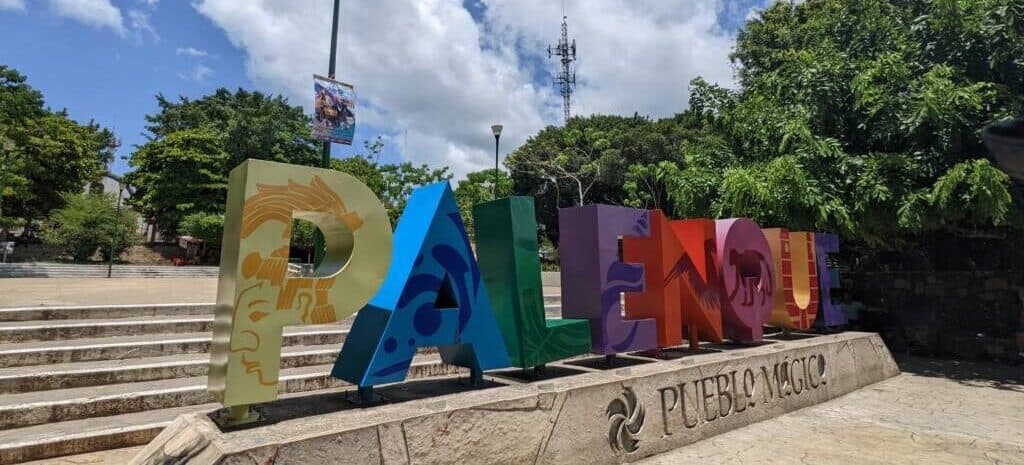
Palenque Road Trip Possibilities
Palenque has to be included as a major attraction on a road trip through the state of Chiapas. It is unlikely to be your starting point but it should definitely be included in the list of must-see places.
Tuxtla Gutiérrez, the capital of Chiapas, has an International Airport making it the ideal location to be the starting point of an amazing road trip through this beautiful state. A road trip that takes in some of Mexico’s most stunning scenery, incredible historic ruins, and a few of the prettiest pueblos mágicos.
Take a couple of easy driving weeks and discover ancient cities like Palenque and Tonina, get swept up in the natural beauty of Sumidero Canyon, Cascadas Roberto Barrios, and the imposing El Chiflon waterfalls, and experience a simpler way of life in the enchanting towns of Comitan and San Cristobal de las Casas.

We did the majority of this itinerary as part of our 5000 km epic Mexico road trip that began in Queretaro. Before arriving in Tuxtla we had been in Oaxaca, and then after Palenque we headed east to the coast to see Bacalar and more of the Yucatan.
This suggested plan heads to the nearest airport after Palenque for those of you who wish to experience the best of Chiapas but have time constraints. I wouldn’t use Villahermosa as anything but a departure point as, from what I have read, it offers very little to appeal to travelers.
This entire road trip is only 550 km / 350 miles and it is possible to squeeze the highlights into a 7-day vacation, but to do justice to this magnificent state you should allow two weeks. And even then there are places you will wish you could have spent more time.
Our Opinion of Palenque
Having previously visited many of the more famous archaeological sites across Mexico like Teotihuacan, Monte Alban, Tulum, and Chitzen Itza, we knew that our ideal epic road trip itinerary had to include a bunch of other sites we had not yet visited.
And once we had decided that Chiapas was to be a big part of that plan, Palenque was right at the top of the list.
What we found is there are really two Palenques! The obvious is the famous Mayan site that has attracted tourists for many years, and the second, lesser discussed Palenque, is the small town located about a 10-minute drive from the ruins. While researching it is sometimes hard to tell what information relates to which Palenque.
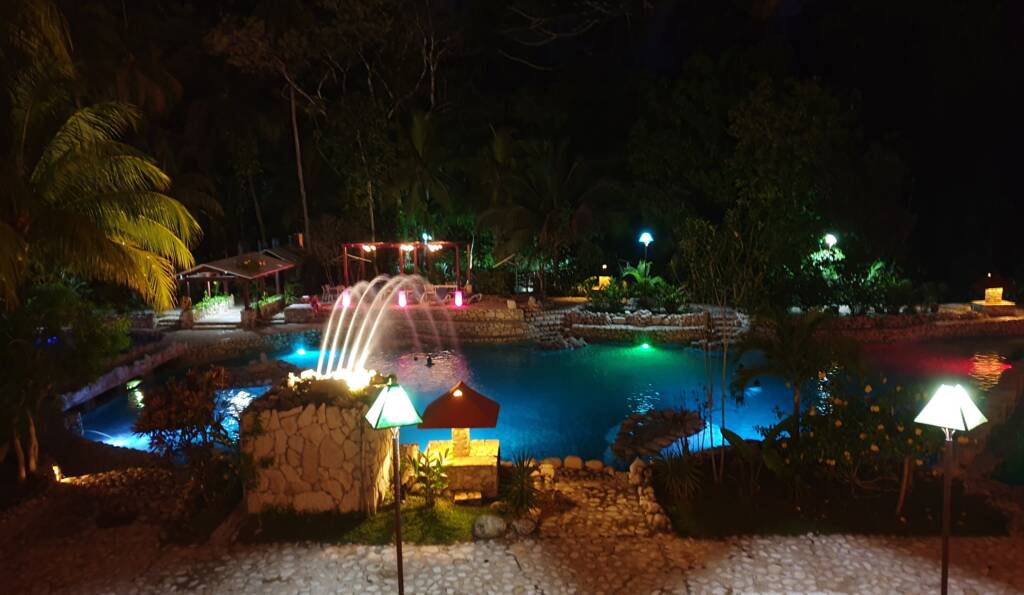
After a couple of weeks staying in comfortable, but very budget-friendly accommodations we went a little upmarket and stayed at one of the best hotels in Palenque, the Chan-Kah Resort Village Convention Center & Maya Spa. It’s an impressive place built in the heart of the jungle and still quite cheap for what you get.
The highlights of the Chan-Kah were the staff, the jungle hut rooms, and a massive pool. But the wildlife in the resort stole the show. The roaming iguanas and spider monkeys playing in the trees around the pool were a fun bonus but the booming screams of howler monkeys hiding in the jungle canopy right outside our room was magical, albeit noisy, and the icing on the cake.
The resort is located just outside the gates to the archaeological zone which was convenient for our visit to the ruins but meant we had to drive into town whenever we wanted to expand our dining options or do some shopping. A minor inconvenience at most.
As for the town, it is nothing special as far as Mexican towns go. It definitely doesn’t rate among the most beautiful, colourful or magical places we visited, but it does still have some charm and some great places to eat. And we made the most of that range of dining options!
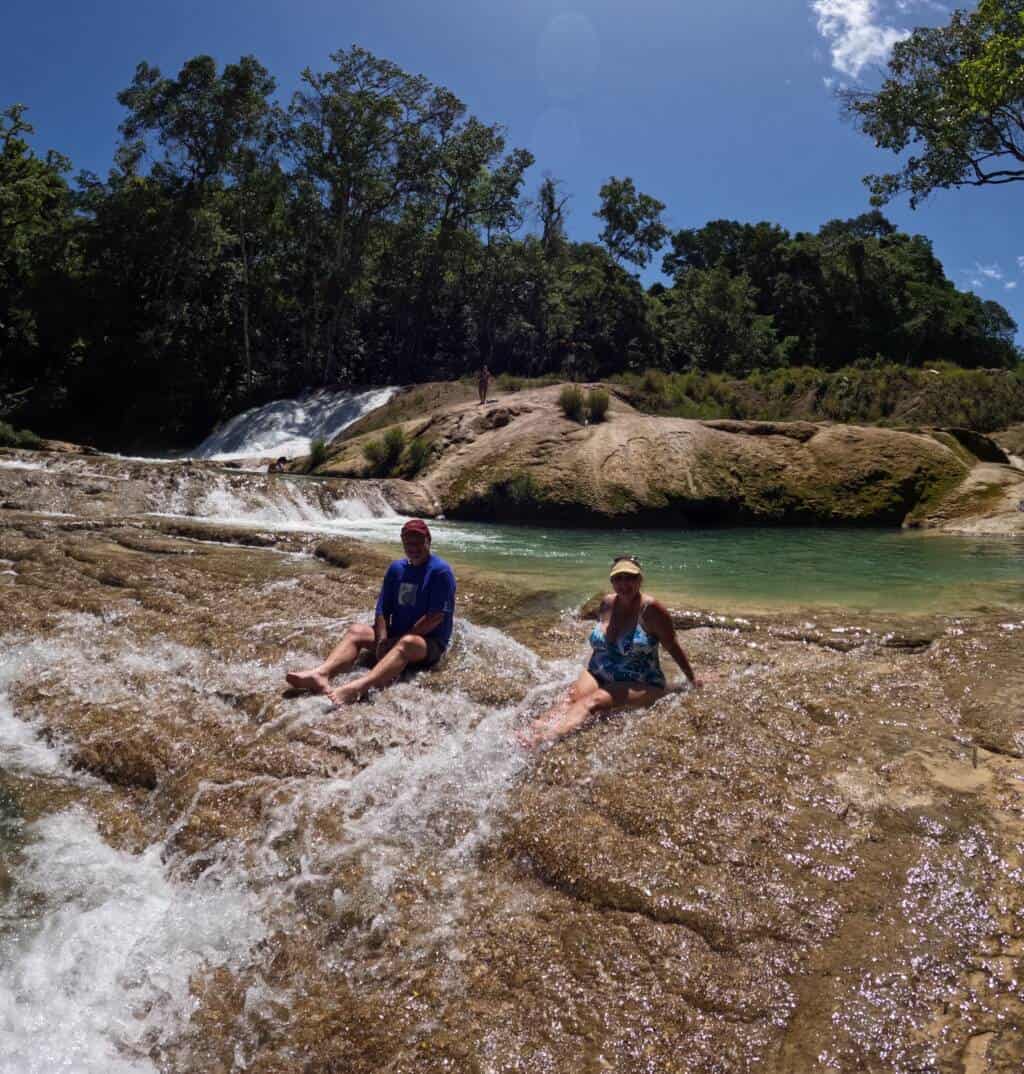
As amazing as the ruins are, and believe me they are amazing, the strongest memories we carry from our time in Palenque are not of Mayan origin. We were left dazzled by the stunning beauty of the nearby Cascadas Roberto Barrios, a privately owned natural attraction that you simply have to see for yourself.
This is a section of the river that covers a run of 6 cascading waterfalls of different sizes and styles, something that sounds impressive without knowing more. But factor in the sparkling blue water running over limestone rocks, and the fact that every fall and pool is swimmable, and you have a place not to be missed.
In a nutshell, we came for some Mayan ruins and left with great memories of that and so much more. While Palenque is famous, it is not as well known as others like Chitzen Itza or Teotihuacan, likely because it’s harder to get to. Nut for those willing to make the effort you will be rewarded with an incredible mix of history and ecotourism. Palenque is amazing!
For more information about the surrounding area try these posts:
10 Reasons to Visit Comitan, a Pueblo Magico
10 Reasons to Visit San Cristobal de las Casas, a Pueblo Magico.

